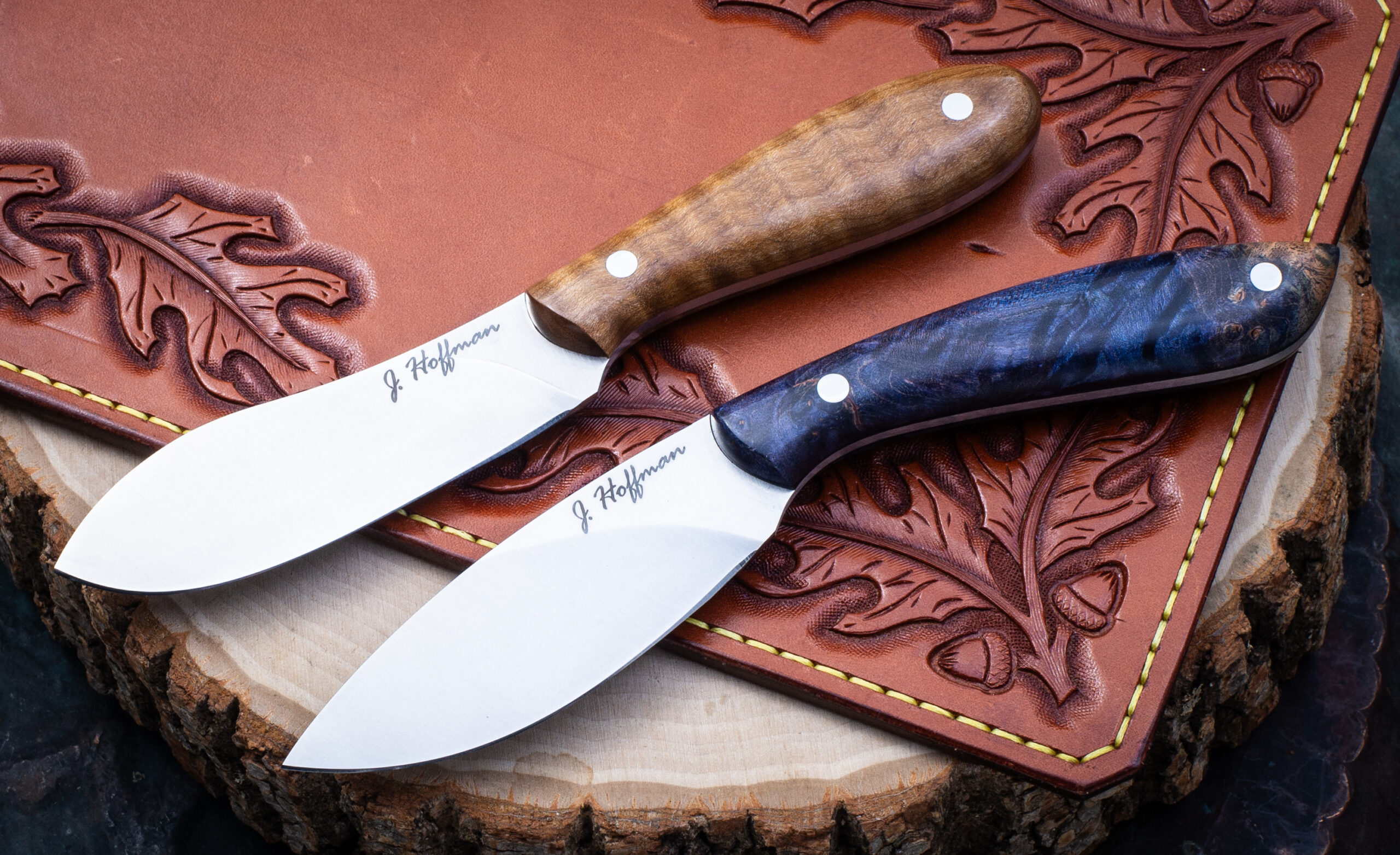Wisconsin-based custom maker Jess Hoffman has been on a knifemaking journey for the last twelve years, honing his craft and building a portfolio of hardworking, thoughtfully-designed fixed blades.
Hoffman’s journey started from a very practical place. Back in 2011, he decided he needed to learn how to sharpen the knives he owned in the correct way. “I felt it was a skill I should have,” he explains. “I went to YouTube and some forums to try to learn. I found the same people that could teach me to sharpen, were also making knives.” That intrigued him, so he took a crack at it himself. The idea was to learn the basics and turn out knives in a casual way, for himself and perhaps some of his friends. “I ordered 3 feet of steel and thought it would last me for a long time,” Hoffman adds. Given that he is still in the biz more than a decade later, it’s safe to say he’s had to re-up his stock from time to time since then.

Spend any time talking to hobbyist or professional makers, and you’re sure to hear a horror story or two about misshapen first attempts at making edged tools. Hoffman seems to have had better luck than most in that department. “I made my first knife in 2012, used it in my kitchen for years, and still have it,” he tells us. To this day, kitchen knife designs form a core part of Hoffman’s output. The Dublin, for instance, was inspired by an antique piece that a customer brought to Hoffman for sharpening. “[It’s] high carbon blade had no markings other than patina,” Hoffman says of that knife. “The handle was loose, but still functioning.The knife was probably 80 years old, but I could tell it was used on a regular basis, and just as useful as when it was new.”
Long-term usability is the core of Hoffman’s own knifemaking ethos. “One of the most asked questions I get from customers is, ‘What do you use a knife like that for?,’” he says. “With a few exceptions I try to have an answer for that question.” Hoffman’s approach is to make something beautiful, but functional. “Most knives from history were not made to be works of art or collector items, they were designed as tools. People depended on these tools to live, whether it be cleaning game, cooking, or just general cutting tasks around the farm or home.” This sense of enduring simplicity, which runs throughout the history of knifemaking, informs his approach. “Thankfully we don’t need to re-invent the wheel, but we can make improvements.”

Some of Hoffman’s knives originate in classic patterns like the Nessmuk or Canadian belt knife, but always with a personal twist. “If I’m basing a model off of a historic pattern or style I usually try to add some sweeping curves to it. The knife needs to have a visual flow to it, but also be comfortable for most grips.” Hoffman likes to make handles and spines that allow for a three-finger grip, with the index finger on the spine for added control. “Most people find that the handle just melts into the palm of their hand and gives them great control and comfort when cutting.”
Hoffman’s plan is to stay focused on the custom knife experience. He wants to grow his shop, including adding a leatherworking clean room, and to streamline his shipping process. “In the spring I’m once again returning to school to study machine tools,” he shares. “I hope in the future those skills will allow me to improve my processes and end product. I think CNC processes are very cool, and would love to add that ability to my shop, but I’m not sure this old dog can learn the new tricks.”
Knife in Featured Image: J. Hoffman Knives Donegal, J. Hoffman Knives Oney
The information provided by KnifeNews.com (the “Site”) is for general recreational purposes only. The views and opinions expressed on the Site are those of the author or those quoted and do not necessarily reflect the views of any entities they represent. All information on the Site is provided in good faith, however, we make no representation or warranty of any kind, express or implied, regarding the accuracy, adequacy, validity, reliability, availability, or completeness of the information on the Site. Under no circumstance shall we have any liability to you for any loss or damage as the result of the use of the Site or reliance on any information provided. Your use of the Site and your reliance on any information on the Site is solely at your own risk.
Read the full article here











Leave a Reply